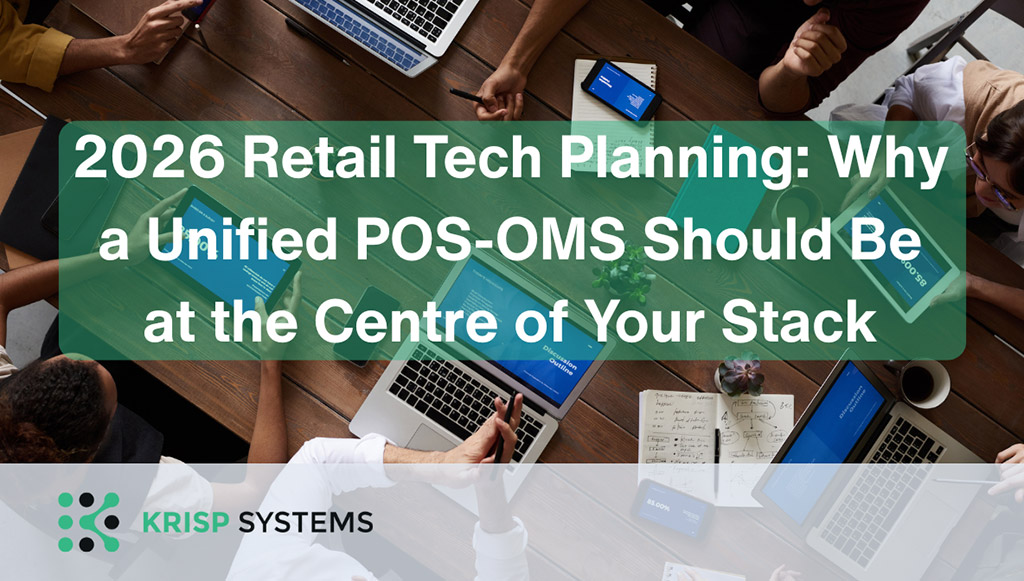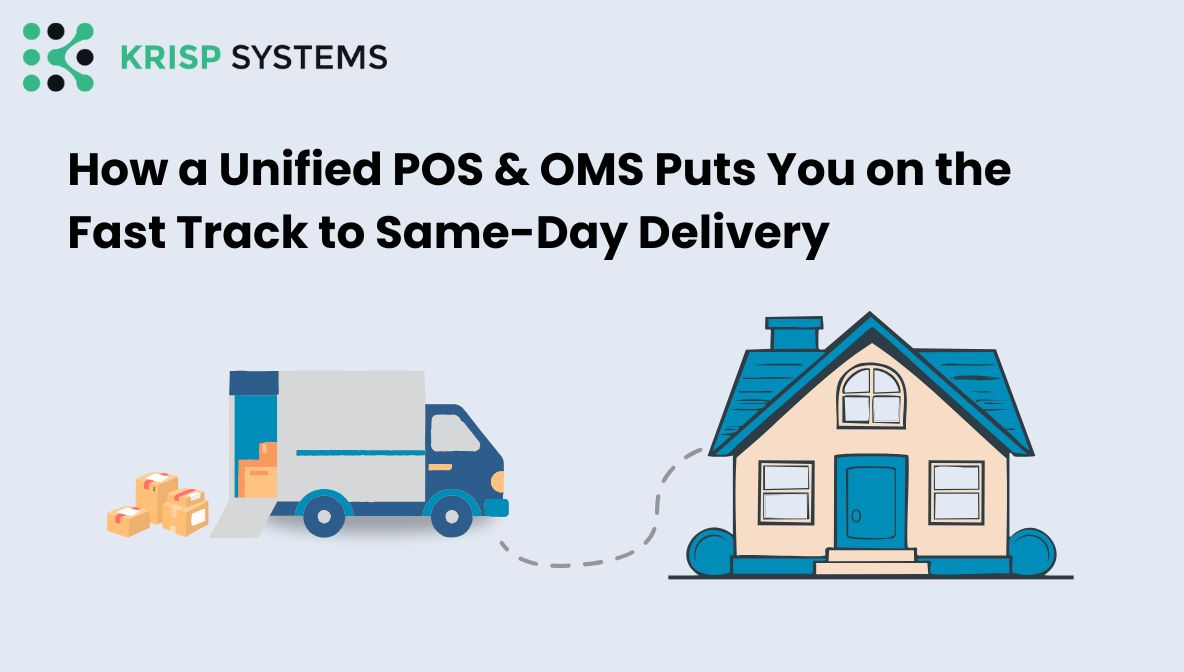The overlooked value of mobility in modern retail
Retail has changed dramatically in recent years. Shoppers now expect convenience, speed, and personal service wherever they are — on the sales floor, online, or at events. Yet many retailers still rely on traditional POS terminals that keep transactions tied to fixed counters.
If you’ve been hesitant to move to a mobile POS (mPOS) system, you might be missing more than flexibility. You could be losing out on faster checkouts, higher sales, and real-time visibility that helps you make smarter business decisions.
What Is a Mobile POS?
A mobile point-of-sale system allows your team to complete sales, check inventory, and manage customers using a tablet or smartphone.
Unlike traditional POS setups, a mobile POS connects directly to your key retail systems, such as inventory management, CRM, and order management (OMS). This connection gives store associates real-time access to stock levels and customer information while they are assisting shoppers on the floor.
A mobile POS turns checkout into an experience that meets customers where they are, not the other way around.
Why Traditional POS Holds Retailers Back
Many retailers underestimate the hidden costs of staying with outdated POS systems. Here are some of the ways it can hold your business back:
1. Lost Sales from Slow Checkouts
Long lines lead to abandoned purchases. Research shows that about 25% of shoppers walk away if the checkout process takes too long. With a mobile POS, staff can process sales anywhere in the store, reducing wait times and saving those sales.
2. Inventory Blind Spots
Without access to real-time stock data, sales staff can only guess what’s available. This leads to missed upsell opportunities and customer frustration. A unified POS and OMS setup gives associates instant visibility across stores, warehouses, and online channels.
3. Limited Customer Engagement
Traditional POS systems restrict your ability to personalise service. With mobile POS, associates have access to customer histories, loyalty status, and product recommendations while helping shoppers, which makes every interaction more meaningful.
4. Higher Operating Costs
Fixed counters require bulky hardware, wired setups, and dedicated space. Mobile POS systems reduce those costs, offer layout flexibility, and make it easier to scale during peak seasons.
5. Missed Omnichannel Opportunities
Without mobile POS integration, in-store activity often stays disconnected from your digital channels. You lose valuable insights about how online and offline behaviors influence each other.
The Real Benefits of Mobile POS
When used strategically, mobile POS is not just a convenience tool but a driver of growth and efficiency.
- Faster Checkouts: Reduce transaction time by up to 25%
- Higher Conversions: Capture more impulse purchases on the floor
- Real-Time Inventory: Keep stock synced across channels
- Empowered Staff: Help more customers with better information
- Better Data Visibility: Connect POS insights with CRM and OMS
- Lower Hardware Costs: Replace bulky counters with flexible devices
Retailers using mobile POS solutions often report sales lifts between 10 and 30 percent. Faster checkouts, personalised interactions, and smarter use of data all add up to measurable gains.
See how retailers are transforming checkout experiences with Krisp’s mobile-ready POS solutions
Request a DemoHow Retailers Use Mobile POS Today
- Fashion and Apparel: Staff check sizes, suggest alternatives, and process sales beside the fitting room.
- Electronics: Associates access specs and warranty details without leaving the customer’s side.
- Pop-Up Stores: Mobile POS enables quick setup with minimal hardware investment.
- Restaurants and Cafés: Orders and payments can be completed tableside, improving service flow.
- Multi-Store Chains: Roll out updates across locations while keeping all data centralised.
Why Integration Matters
A mobile POS reaches its full potential when it’s part of a unified commerce stack. When integrated with your Order Management System (OMS), it becomes a connected piece of your retail ecosystem.
This setup synchronises:
- Inventory across all stores and channels
- Customer data for personalised service
- Fulfillment options like in-store pickup or endless aisle
- Analytics and reporting for better decision-making
That is the difference between a mobile POS as a standalone tool and a mobile POS that truly transforms retail operations.
Common Misconceptions About Mobile POS
“Mobile POS is only for large retailers.”
Not true. Cloud-based systems scale easily for both small businesses and large multi-location chains.
“Mobile POS is not secure.”
Modern platforms use advanced encryption and tokenisation that often exceed the security standards of traditional POS systems.
“It’s hard to train staff on mobile POS.”
Most mobile POS systems have intuitive interfaces similar to apps employees already use, making training quick and simple.
FAQ: What Retailers Ask About Mobile POS
Q1: Can mobile POS work offline?
Yes. Most systems can process transactions offline and automatically sync data when connected again.
Q2: How does mobile POS integrate with existing systems?
Through cloud APIs that connect POS to ERP, OMS, and CRM platforms, ensuring real-time synchronisation.
Q3: Which industries benefit most from mobile POS?
Retail, food service, and events; anywhere customer experience and speed are critical to conversion.
Q4: How soon can I expect ROI from a mobile POS?
Retailers typically see returns within three to six months, especially when mobile POS is linked to order management.
Q5: What’s the best first step in adopting mobile POS?
Assess your current POS setup, confirm that your OMS supports mobile integration, and start with a pilot store before expanding.
Conclusion: Mobility Defines Modern Retail
Shoppers no longer separate online and in-store experiences. They expect consistency and convenience across every touchpoint.
A mobile POS system is more than a modern checkout option; it is a key part of unified commerce. It gives retailers the agility to serve customers better, connect data across systems, and operate with confidence in real time.
Without it, you’re not just missing efficiency. You’re missing the opportunity to meet today’s customers where they are.
Ready to see what mobile POS can do for your stores?
Learn how Krisp’s Unified POS + OMS brings mobility, real-time visibility, and seamless checkout to every retail touchpoint.
Talk to an Expert



